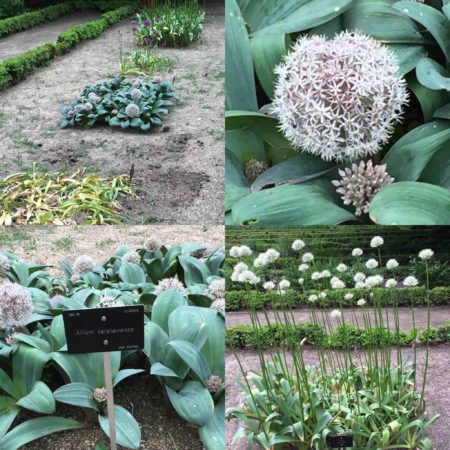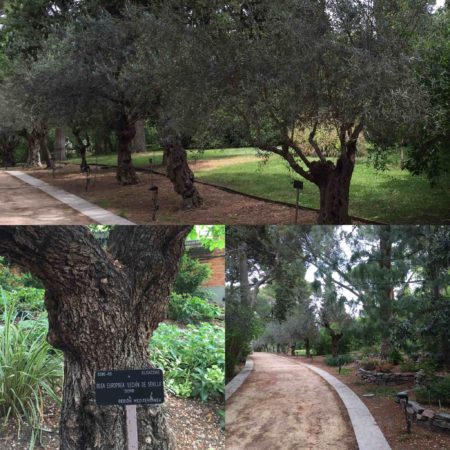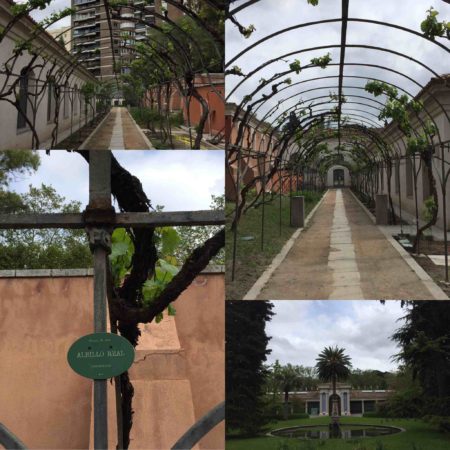Had a nice afternoon out at the Real Jardín Botánico in Madrid last week, offspring in tow (who thankfully didn’t complain too much). It goes back to the late 18th century, and it’s beautifully laid out, and indeed located, though a cool and wet afternoon in early May did not show it off at its best. Anyway, there were a few nice wild Allium specimens out.

But what really caught my attention were the alley of local olive varieties…

…and, to a slightly lesser extent, the rows of local grapes.

I say “to a lesser extent” because some of the grape specimens seemed decidedly ropey to me. But maybe they’ll look better in the summer. Interestingly, the botanic garden does not feature in WIEWS as a genebank. Which it should, as it clearly is, and has been for a while, if the size of those olives is anything to go by.
As far as I know, the royal botanical garden of Madrid is not part of today’s PGRFA network and programme in Spain. But it did play an important role for research in agricultural crops in the past. I believe Vavilov visited the garden while he was in Madrid. At the beginning of the XIX century, one of the directors of the botanical garden was Claudio Boutelou, who was an agronomist and botanist (oh yes, those where the times were you could be both!) and who did a lot of research and publications of crop plants and varieties being grown in Spain (and Europe, as he had a lot of connections with France and the UK) at that time. His Tratado de la Huerta is worth mentioning. It is very enjoyable and informative reading and has lots of information on vegetable varieties grown at that time. Here is an electronic copy from Google.